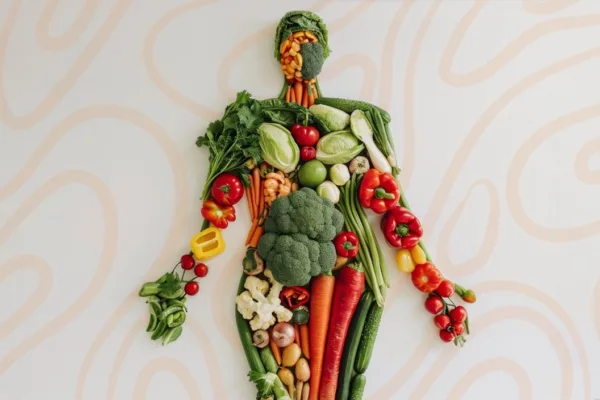How Do You Start a Low-Carb Diet and What Are Its Key Benefits?
A low-carb diet helps with weight loss, stable energy, and better blood sugar control by reducing carb intake and focusing on whole foods. Key takeaways:
- Start gradually with 100–200g carbs/day based on goals.
- Focus on real foods: lean proteins, healthy fats, low-carb veggies.
- Avoid processed “low-carb” products and hidden sugars.
- Stay hydrated, manage electrolytes, and increase fiber.
This approach is sustainable, effective, and adaptable to your lifestyle.
If you’ve been thinking about starting a low-carb diet, you’re not alone. With so much talk about it, you might be wondering how to begin, what the real benefits are, and how to make it work for you. Unlike extreme diets, a low-carb approach can be flexible and sustainable while still offering significant health benefits. This guide will walk you through the basics of a low-carb diet, its advantages, and how to get started in a way that fits your lifestyle.
What is a Low-Carb Diet?
A low-carb diet focuses on reducing your intake of carbohydrates—which include foods like bread, pasta, rice, and sugary snacks—while increasing your consumption of protein and healthy fats. Unlike very restrictive diets, a low-carb approach allows for personalized carb intake levels, making it easier to sustain over time.
Here are some common types of low-carb diets:
A low-carb diet can be an effective way to improve health, manage weight, and boost energy. Depending on daily carbohydrate intake, it can be categorized into different levels:
Moderate Low-Carb Diet
100-150 grams of carbs per day
- Best for maintaining weight, boosting metabolism, and achieving sustainable weight loss
- Recommended sources: non-starchy vegetables, low-sugar fruits, whole grains, and legumes in controlled amounts
- Ideal for active individuals and athletes who need moderate energy levels
Mild Low-Carb Diet
150-200 grams of carbs per day
- Best for adopting a healthier diet without drastic changes
- Recommended sources: Vegetables, fruits, whole grains, and legumes in moderation
- Ideal for those looking for a balanced lifestyle without major dietary restrictions

Important Notes:
- The quantity of carbs matters, but so does their quality. It’s best to reduce processed carbs and refined sugars while focusing on healthy sources like vegetables, nuts, and whole grains.
- If your goal is rapid weight loss or entering ketosis, you may need to lower your carb intake to under 50 grams per day.
- If dieting is too hard for you, there are other non-surgical weight loss options you can try at elegant hoopoe.
Benefits of a Low-Carb Diet
Many people turn to low-carb eating for weight loss, but the benefits extend far beyond that. Here’s what research says:
2.1 Weight Loss and Appetite Control
Reducing carbs can help you lose weight without feeling hungry all the time. Studies have shown that a low-carb diet can lead to more effective fat loss compared to low-fat diets. The reason? Lowering carbs stabilizes blood sugar and reduces cravings.
(Image)
2.2 Improved Energy Levels
A steady intake of healthy proteins and fats can prevent energy crashes caused by high-carb meals. Many people on a low-carb diet report more sustained energy throughout the day.
2.3 Better Blood Sugar and Insulin Sensitivity
A lower carbohydrate intake can help regulate blood sugar levels, which is especially beneficial for people with insulin resistance or prediabetes. Eating fewer refined carbs reduces blood sugar spikes, leading to better overall health.
2.4 Reduced Inflammation and Better Heart Health
A diet lower in processed carbs and sugars can improve heart health by reducing inflammation, lowering triglycerides, and improving cholesterol levels.

How to Start a Low-Carb Diet
Starting a low-carb diet doesn’t have to be overwhelming. Here’s how to ease into it:
3.1 Set Your Carb Limit in a Low-Carb Diet
Determine how many grams of carbs you want to consume daily based on your goals. If you’re looking for steady weight loss, aim for 100-150 grams per day. If you just want a healthier diet, keeping carbs under 200 grams per day can still be beneficial.
3.2 Focus on Whole, Nutrient-Dense Foods
The key to a successful low-carb diet is choosing high-quality, whole foods rather than relying on processed options. Your diet should include:
(Image)
- Protein: Lean meats (chicken, turkey, beef), fish, eggs, tofu, and tempeh.
- Healthy Fats: Avocados, olive oil, nuts, seeds, and fatty fish like salmon.
- Low-Carb Vegetables: Leafy greens, broccoli, zucchini, cauliflower, and bell peppers.
- Dairy (if tolerated): Cheese, unsweetened yogurt, and butter.
3.3 Avoid Processed “Low-Carb” Foods
Many packaged “low-carb” products are highly processed and may contain unhealthy additives or sugar substitutes. Stick with real, whole foods whenever possible.
3.4 Stay Hydrated and Maintain Electrolyte Balance
When reducing carbs, your body tends to lose more water and electrolytes. To prevent dehydration, make sure you:
- Drink plenty of water.
- Consume foods rich in sodium, potassium, and magnesium (e.g., leafy greens, nuts, and bone broth).
3.5 Manage Cravings and Hunger
At first, you may experience carb cravings. To stay on track:
- Eat enough healthy fats to feel satisfied.
- Increase fiber intake from vegetables and nuts to promote fullness.
- Don’t skip meals—plan your meals to prevent unnecessary snacking.
Common Mistakes to Avoid
Many beginners make mistakes when starting a low-carb diet. Here’s what to watch out for:
- Cutting carbs too quickly: Gradually reduce carbs instead of making drastic cuts to prevent fatigue.
- Not eating enough fiber: Include fiber-rich veggies to support digestion.
- Focusing only on protein: A good low-carb diet includes healthy fats, not just protein.
- Forgetting to track hidden carbs: Watch out for hidden carbs in sauces, dressings, and drinks.
Monitoring Your Progress
To stay on track, consider:
- Keeping a food journal or using an app to track your carb intake.
- Listening to your body—adjust your weight loss diet as needed to suit your energy levels and goals.
- Consulting a healthcare provider or nutritionist, especially if you have medical conditions.
Conclusion
Starting a low-carb diet can be a sustainable and effective way to improve your health, boost energy levels, and support weight loss. The key is to focus on whole, unprocessed foods and find a balance that works for you. By following these simple steps, you’ll be well on your way to a healthier lifestyle—without unnecessary restrictions or stress.
References:
PubMed Central (PMC)-Benefits of Low Carbohydrate Diets: a Settled Question or Still Controversial?
BBC Good Food-What are low-carb diets?
healthline-10 Health Benefits of Low-Carb and Ketogenic Diets
Mayo Clinic-Low-carb diet: Can it help you lose weight?
EatingWell-How to Start a Low-Carb Diet
Verywell Health–Can a Low-Carb Diet Help Improve Your Health?






